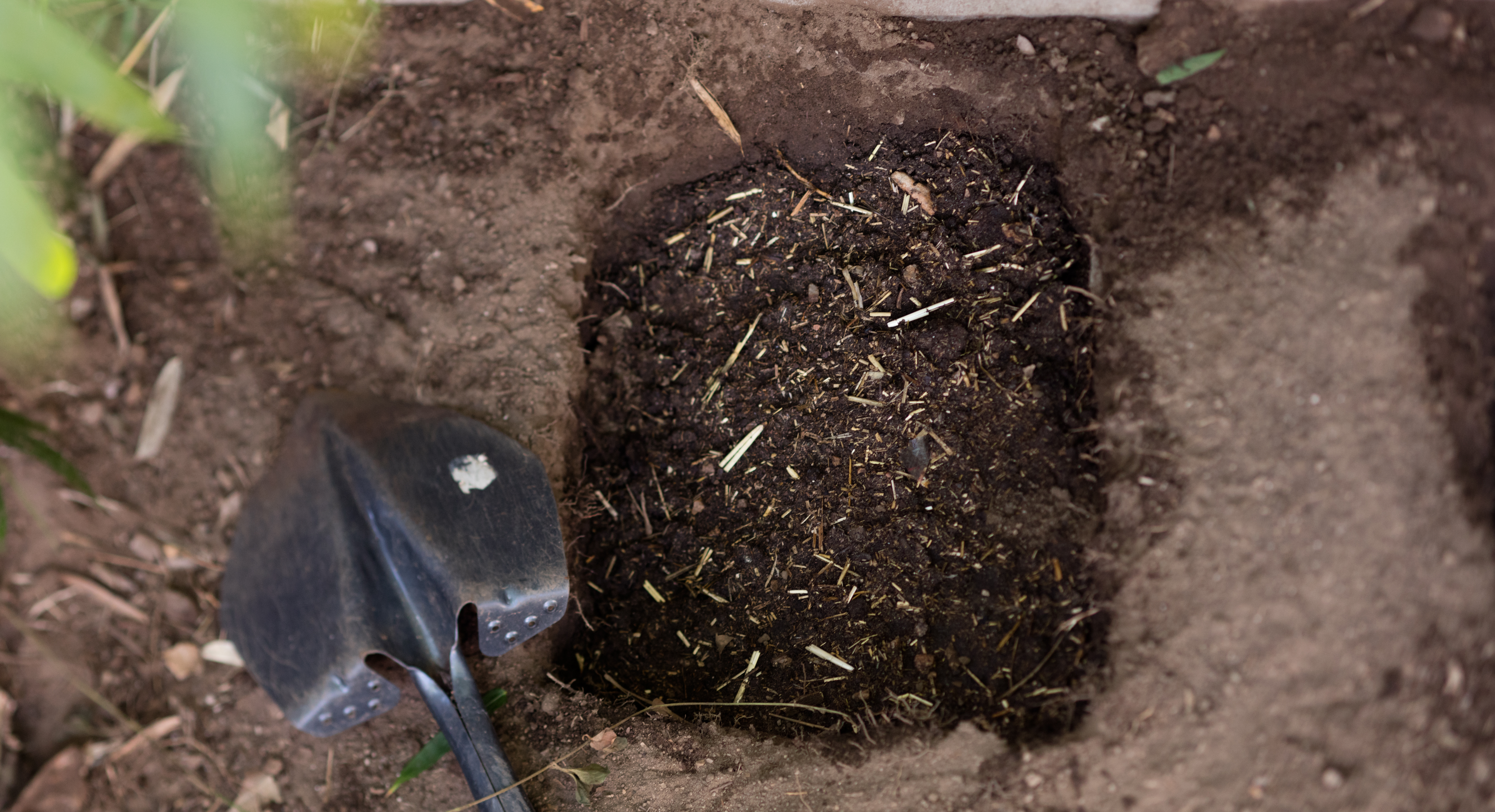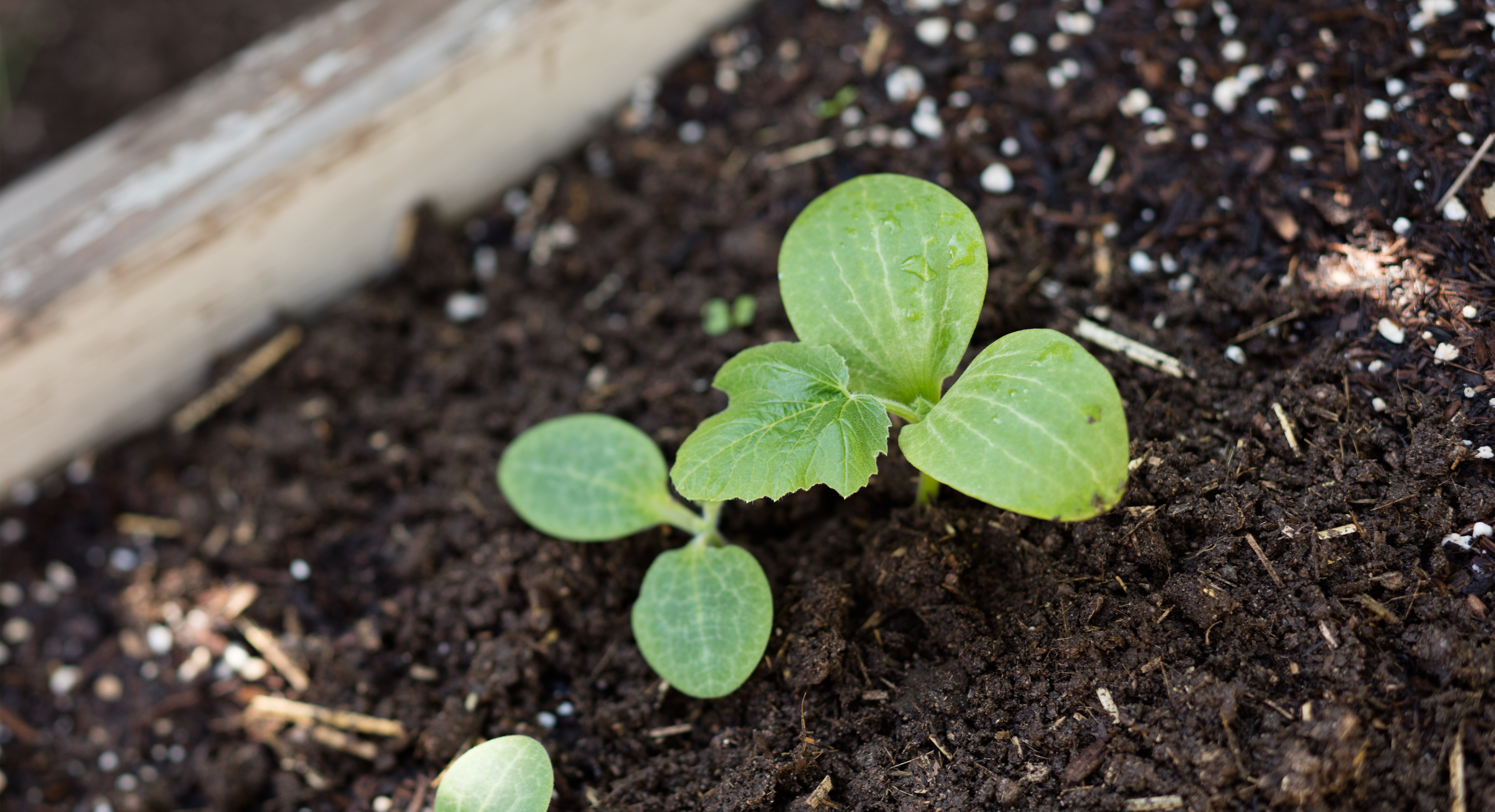According to the National Resources Defense Council, Americans throw away 40 percent of the food that is annually produced in the United States.
That’s approximately 35 million tons of food collectively and $1,500 worth of wasted food per family per year, says another 2013 study by the Environmental Protection Agency. And, judging by history, the problem is only getting worse: The current figures are 20 percent larger than the amount of food wasted in 2000, 50 percent more than in 1990, and 300 percent higher than in 1960!
So what can you do to help? There are two things that can make a huge impact:
- Grow your own food
- Compost food waste
Of course, you don’t have to start a farm to make a difference. A small garden full of vegetables and herbs that you use on a regular basis goes a long way in reducing waste in the food chain. Tomatoes, peppers, cucumbers, basil, and parsley are all easy to grow and great options for a small starter garden.
Even with all your favorites, though, nobody can realistically eat 100 percent of the food they purchase or produce. That’s where composting comes in. Rather than toss unused vegetation in the garbage, start a compost pile, which, over time, can be cultivated into mulch that will provide valuable nutrients to keep growing your gardens. See how that works?
The process of accelerated decomposition
Compost is pretty simple to understand when you break it down. It is essentially a soil made up of decomposed organic materials. All organic matter will eventually decompose into constituent nutrients, such as nitrogen, phosphorous, and potassium—the same nutrients needed by plants to thrive and grow.
Humans have using organic material additives in agriculture for centuries, if not millennia. As early as the 18th century in North America, Native Americans and early European settlers used a combination of muck and fish to provide added nutrients to their farms.
Modern composting, which was discovered in the late 19th and early 20th centuries, simply accelerates the natural decomposition process and is comprised of three parts brown to one part green plant materials. Brown matter such as dead leaves, branches, and twigs provides carbon, and green plant matter such as grass clippings and vegetable and fruit waste provides nitrogen.
When this organic material is combined with plenty of air and water, various microorganisms will begin to break everything down into compost. The microorganisms include:
- Bacteria: These are the primary microorganisms responsible for breaking down organic material.
- Actinobacteria: A family of soil bacteria that can break down processed woods such as tree bark, newspaper, and other cellulose-based plastics.
- Fungi: A group including molds and yeasts that break down certain wood-based polymers that bacteria cannot.
- Protozoa: These microorganisms control the bacteria, fungi, and pathogens living together in the compost.
- Earthworms: In some forms of composting called vermiculture, red wiggler worms or European nightcrawlers can be used to break down the organic material. Earthworms eat and digest the waste, and excrete compost that is uniformly mixed and ground with minerals and beneficial microorganisms.
When all the material is effectively broken down, compost will turn into a dark, moist substance known as humus (not to be confused with the food product hummus, of course) that greatly improves the nature of the soil.
The benefits of composting
Though our culture collectively wastes an incredible amount of food, the problem is not just the regrettable grocery buys that are tossed out simply because you never got around to preparing them. Think about all the organic matter that goes into your garbage whenever you prepare any meal: celery fronds and roots, carrot tops and peels, onion ends, potato peels, citrus rinds, apple cores, herb stems, outer leaves of lettuce and cabbage, coffee grounds. These discarded parts alone are a significant portion of the food waste that ends up in landfills, waterways, and water treatment plants.
Putting all of this organic matter (and even adding compostable dinner materials!) into a compost pile will not only provide a natural way to nourish your gardens and therefore provide healthier, more delicious food for you and your family, but—perhaps more importantly—the practice diverts discarded remnants from landfills where they will eventually turn into greenhouse gas emissions like methane.
So, how does compost make your soil ideal?
Conditions soil
First and foremost, compost acts as a soil conditioner, meaning it improves the structure and texture. Soil tends to become compact over time, but compost helps it achieve a crumbly texture that drains well, yet maintains some moisture, and can be turned over easily.
The broken-down soil allows water and nutrients to move freely around the plants’ roots, but not wash away too quickly. That, too, allows young plants to establish themselves.
Adds nutrients
Compost also adds various nutrients to the soil that are required for healthy plant growth. The three primary compounds are:
- Nitrogen
- Phosphorous
- Potassium
Compost also contains micronutrients such as manganese, copper, iron, and zinc, which are not needed in large amounts, but are nonetheless essential to plant function—much like vitamins and minerals in our own diets. However, commercial fertilizers often lack these micronutrients.
Balances pH
Most common garden plants prefer neutral to slightly acidic growing environments. Compost starts out acidic at the beginning of the process, but is generally in the neutral range by the time it is finished.
Acts as a natural fertilizer
Although the scientific mechanism by which it works is not totally clear, there is encouraging research that compost helps to control plant disease and crop losses without the use of chemical pesticides, herbicides, or fungicides. The EPA theorizes this happens via one of these four mechanisms:
- Beneficial microorganisms in compost outcompete bad microorganisms for nutrients
- Beneficial microorganisms produce antibiotic substances that kill bad microorganisms
- Beneficial microorganisms prey on pathogens
- Compost activates disease-resistant genes in plants
Whatever the scenario, compost has become an essential part of growing a healthy, organic garden for many.
In addition to all these benefits, composting is also a great way to teach your children about nature and the life cycle, and helps them develop a closer, more respectful relationship with food and the food supply system.
How to compost at home
Composting at home is very easy. It starts with first choosing your location. If you have a backyard, you have a lot of options for creating an outdoor compost pile. Here are the three most common:
- Basic heap: If your homeowner association or landlord isn’t too fussy (or you’re lucky enough not to have one), you can simply clear an area in your backyard for a large composting heap. Make sure it’s at least three feet wide, three feet long, and three feet high. Using a pitchfork, turn the heap on occasion to help accelerate the composting process by aerating the materials.
- Holding unit: These enclosed units are very versatile and do a good job of concealing the compost pile (especially if you have nitpicky neighbors). You can purchase or build a holding unit out of lumber, metal barrels, concrete blocks, or bricks. If you choose one made of lumber, make sure it is untreated wood, since the chemical preservatives in treated wood can be toxic if they penetrate the compost pile. However, because they are enclosed, holding units are often difficult to aerate, so the transition to mulch can be much slower using this method.
- Turning unit: You can also purchase a turning unit, which is essentially a perforated barrel that can be manually rotated to ensure proper aeration. The downside of turning units is that they are expensive and generally have smaller capacities than normal holding units.
If you don’t have a backyard, don’t fret—you can still compost! All you need is a simple container, sold at most online retailers and chain stores and some garbage bags. The container essentially looks like a fancy garbage can, and can be placed side-by-side in your kitchen to make it even more intuitive to compartmentalize waste once you are done with a meal.
Just make sure it has a tight lid—the composting process can be a bit stinky. One tip: If the smell is overwhelming, add more brown material to the mix (if you need more supply, you can also ask a landscaper for woodchips and clippings).
Once you have your container, it’s time to get scrapping!
In order to achieve the fastest composting results possible, you need to layer your compost pile.
- The first layer should contain organic materials, such as fruit and vegetable waste, grass clippings, leaves, hay, straw, corn stalks, sawdust, and twigs. Ideally, this organic layer should have a carbon to nitrogen ratio between 25:1 to 30:1. Vegetable and fruit waste generally has a C:N ratio of 12:1 to 15:1, while wood and wood products have C:N ratios of 250:1 to 500:1. Make sure to mix organic materials to achieve a good C:N ratio.
- The second layer should be some kind of mild fertilizer, which can help as a starting source of nitrogen for microorganisms.
- The third layer should be top soil or leftover finished compost, which can help introduce microorganisms into the compost pile.
Then, you need to turn and aerate. If you are adding new materials to your pile throughout the year, make sure to turn the pile and add water every four to five weeks. If you aren’t adding new materials, you can turn and add water after five weeks and then let the compost decay another three to four months before it is ready to use.
Before long, you’ll have the desired humus and be on your way to saving your body with good-for-you garden ingredients and, even better, saving the world.
Photo credit: Paul Delmont

